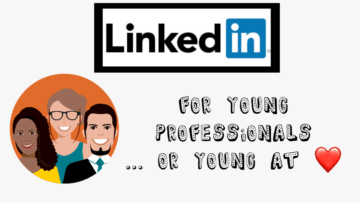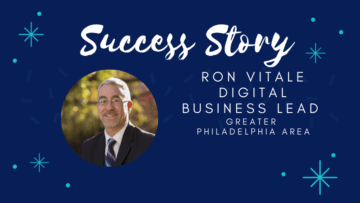Are you looking for additional ways to network with people, but are hampered due to the pandemic? Instead of merely sending cold “connect with me” requests through LinkedIn in, why not try out one of these other approaches?
Start a Podcast
If you have a computer, are curious by nature, and are willing to step out of your comfort zone, consider creating a podcast. It not only can help you connect with other professionals, but you create a product that becomes your business card that has a life of its own.
Pick an interest that you are passionate about and then reach out to people in your network and ask if they would be willing to be interviewed on your podcast. Over time, as you build up episodes, you can then take risks and invite people onto your podcast with whom you always wanted to speak.
Not only are you able to have thoughtful conversations with people, but by recording the session, you’re able to share what you learn with others. Your ability to network will skyrocket as you’re not only reaching out to new people to speak with, but over time, you’ll be building an online repository of content that will make your website a destination place for other like-minded professionals.
So how do you get started using a podcast? It’s not as complicated as you might think. The most challenging aspect is the planning, organizing, and doing the work. From a technical standpoint, there are many free tools available. The basics of what you need are:
● Recording equipment. To record, you’ll need a laptop and a microphone. (Yes, you can use your phone in a pinch, but for best sound quality, you might wish to pick up a USB microphone with a shock mount and pop filter.)
● You’ll need software such as Pamela (for Windows) or ecamm (for Mac) to record your interviews.
● Free software such as Audacity is available for editing your raw audio file. And if you need to learn how to use the software, free YouTube videos are available to help.
● And finally, you’ll need a place to host your final podcast files. Anchor offers a free service (but be sure to read their terms of service to make certain you’re comfortable with it, as they might run ads within your podcast or create a derivative of your work). Services like Buzzsprout and Podbean also offer limited free services and paid options for more functionality and server space.
Want to learn more about how to start a podcast? Be sure to read Joanna Penn’s How to Podcast article for more tips and recommendations on services and equipment.
Write a Book
Like creating a podcast, writing a book is another unconventional way to broaden your professional network while also allowing you to become a thought leader or influencer in your area of expertise.
First, take an idea and then come up with five people you’d like to interview in your book. Reach out to those individuals, share your vision with them, and ask if they would be willing to be included in your book.
Need an example to help you get started?
Monika Kanokova wrote her book My Creative (Side) Business: The insightful guide to turning your side projects into a full-time creative business by reaching out and interviewing 12 female entrepreneurs and asking each of them a set of questions. Her interviews allowed her to connect with like-minded women from around the world, amplify their stories, and then offer the book to up-and-coming freelancers who looked for a place to start.
The options available to you are endless. You could choose to make a short ebook or a print version, offer the book in digital formats that will work on a variety of ebook readers, or even distribute the book for sale on Amazon, Kobo, Barnes & Noble.
If you need help in creating an ebook, be sure to read my step-by-step How to Publish an eBook in 8 (Somewhat) Easy Steps. The technical aspect of creating a book is not the primary challenge. With today’s technology, anyone can easily create a book from their own computer, free software, and then distribute online.
The more significant challenge is coming up with an exciting topic, defining your project’s scope, and then executing. Remember, a book doesn’t need to be written in a day or a week. You can set your schedule as you see fit.
An excellent place to start is to brainstorm, select your idea, and then run with it. Writing 1,000 words a day for four days a week will net you 48,000 words in three months. That’s plenty to work with for a first non-fiction book.
After the draft is finished, you can use tools like Grammarly or ProWritingAid to edit the book (or share with friends to get their feedback), and if you’re not up for the challenge to format the text yourself, there are many freelancers out there to do the work for you at a minimal cost.
Once you have the book, share it with your professional networking groups. The point isn’t to become rich from the book, but to use your work as your business card. You can connect with other professionals during the research phase of your project and then share the books with those individuals to pass the book along to their networks (be sure to list your contact information in your book so that readers can reach out to you).
Over time, with one ebook, you can distribute the file for free to tens of thousands of people. The possibilities indeed are endless if you are willing to step outside the parameters of traditional networking.
Volunteer and Teach
What skills do you have? Choose one and then offer to reach out to a professional group and offer your services to the group. The Great Careers Network& BENG is one such organization that offers a plethora of events throughout each month.
Instead of looking for people to come to help you network or find a job, flip the dynamic, and ask yourself: “What do I have to offer others? How can I help?”
Professional networking is a two-way street in that we’re looking to make connections with people and give.
Think about how you can help people, write your idea down, and then reach out and volunteer to help. Do you have tech skills? Professional networking tips? Unconventional job searching techniques? If you stop to think about your skills, see what you’re passionate about, and then give back. The more you give back, the more your network will grow as you will become the person that people want to gravitate toward instead of showing up to people with your hand out.
If you want to take teaching to another level, why not record yourself on a platform such as Teachable, and then offer the recording to people? If signing up for a paid service is not an option, use your laptop to record your screen, and then upload the video to YouTube.
Take the YouTube link and share the video out on Twitter, LinkedIn, and any professional networks where you are a member.
Summing It Up
Yes, we are in the middle of a pandemic, and it’s more challenging than ever to meet up with people to network professionally. Stop sending the cold invites to people on LinkedIn. Successful networking takes effort, and the ideas suggested here are creative ones to challenge you in ways you might feel uncomfortable. That’s the point. Each of us has an opportunity to step up and use the skills/tools at our disposal to create something great and share that with others. Have fun, and if you have a question about one of the ideas in this article, reach out and contact me.
Author Bio
Ron Vitale is an accomplished director of digital project management and has successfully overseen the launch of more than a dozen websites seeking employment opportunities.
His colleagues have come to know him as a diplomatic problem-solver with a proven ability to envision people’s web needs and then launch viable new web-based systems on time and under budget.




